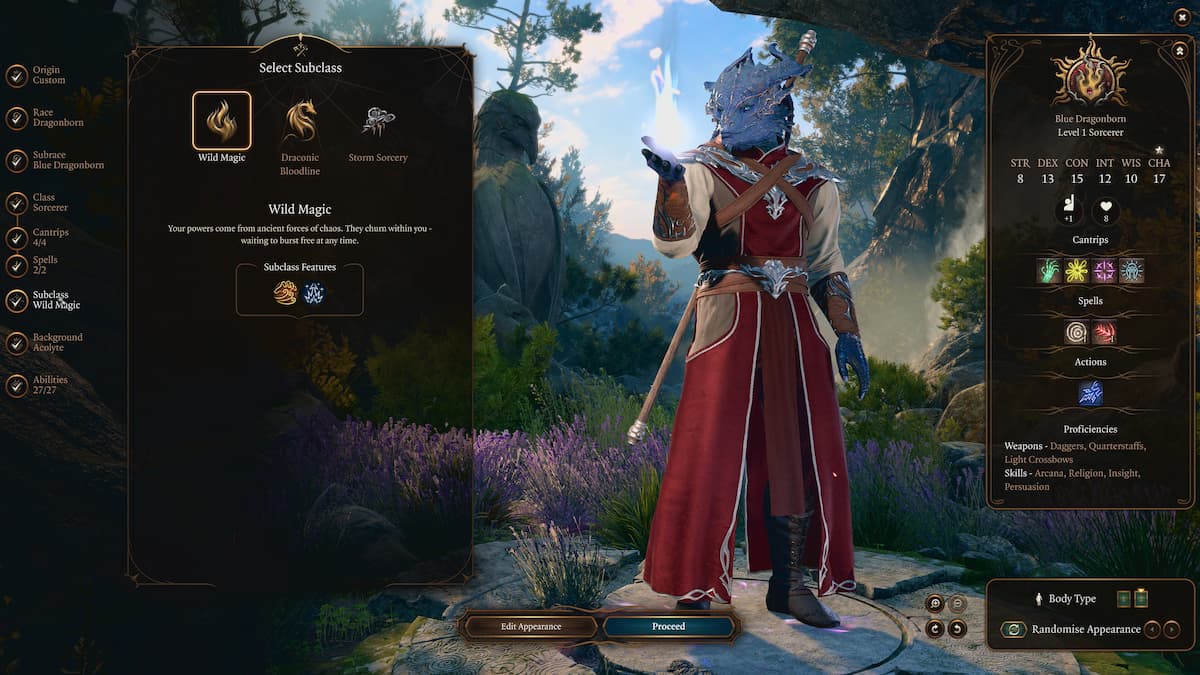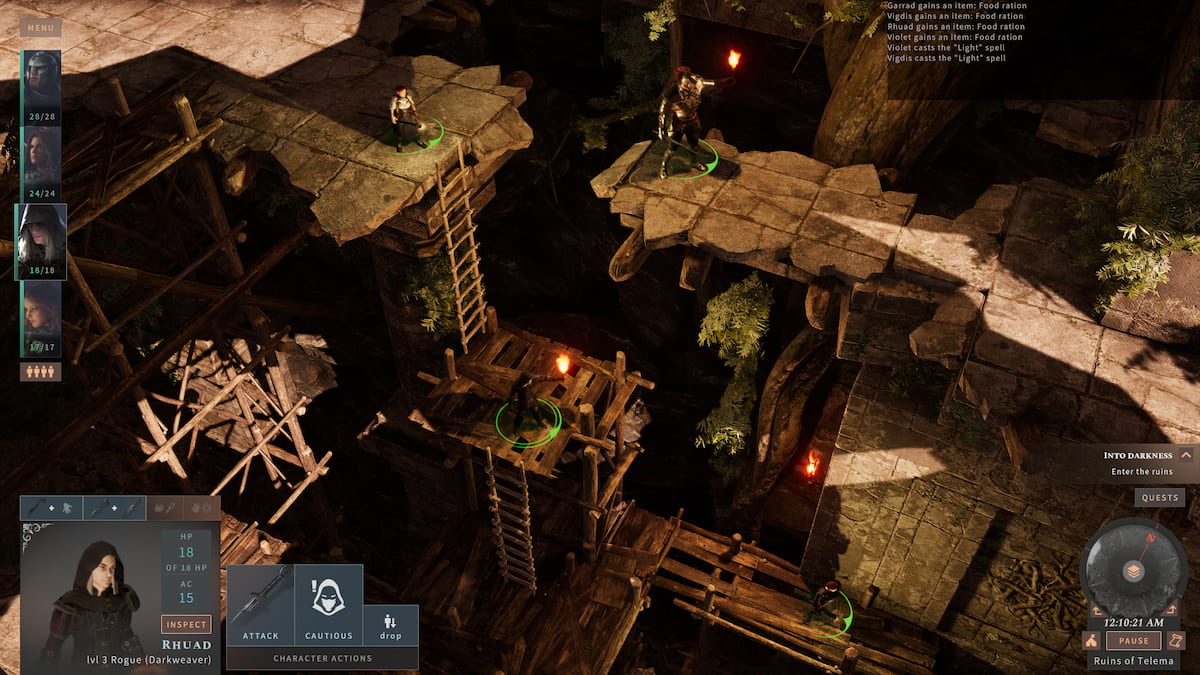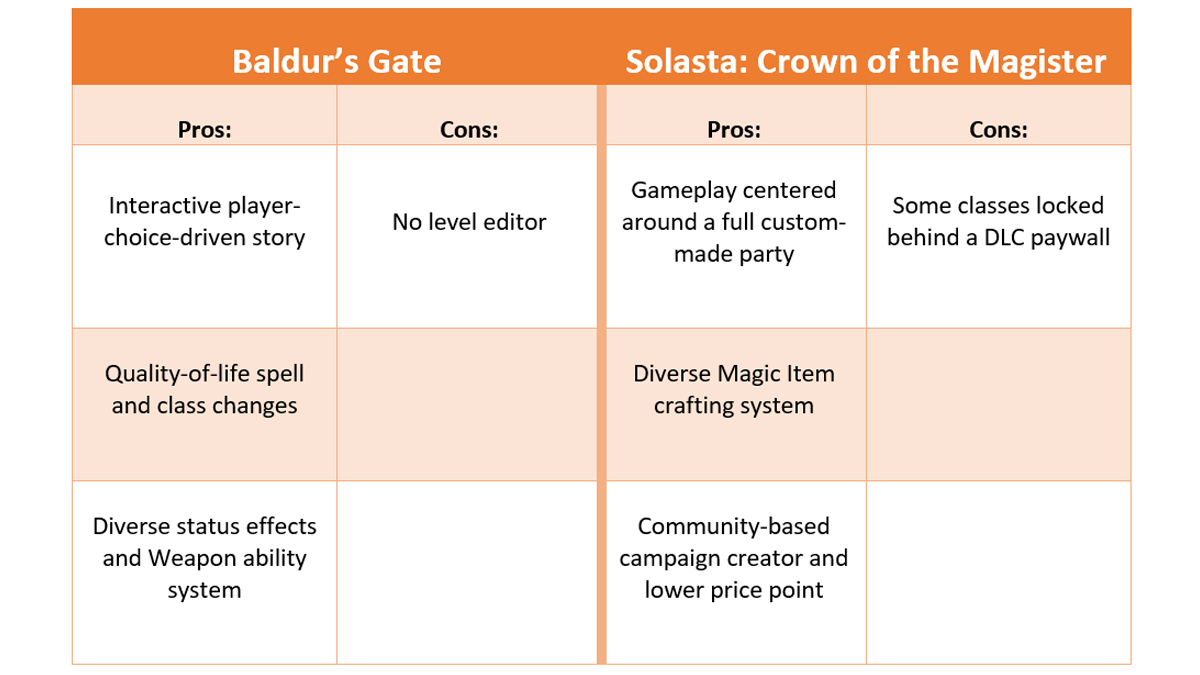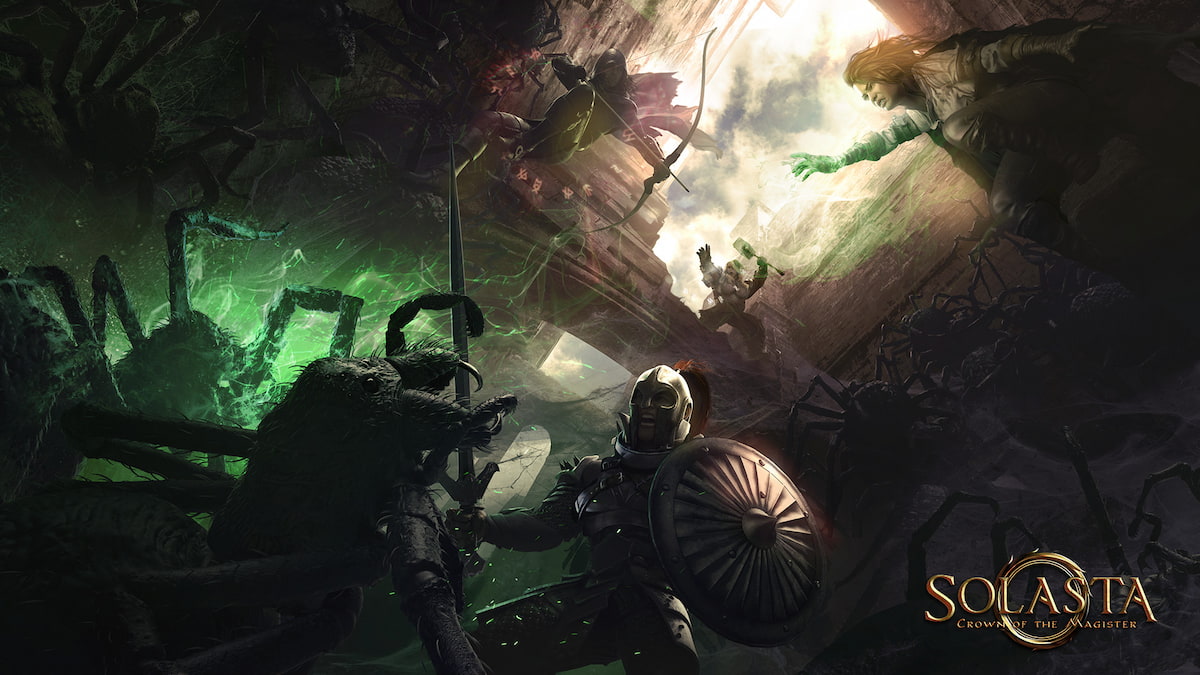Fans of CRPGs and, more specifically, D&D 5e-inspired games have probably heard of Baldur’s Gate 3’s spiritual predecessor Solasta: Crown of the Magister from 2021. These two titles are, as of now, the only video game adaptations of the Dungeons & Dragons 5e ruleset. While there’s a difference in budget and studio size between Baldur’s Larian and Solasta’s Tactical Adventures, both are faithful and engaging experiences. With this in mind, let’s compare Baldur’s Gate 3 vs. Solasta, listing their pros and cons to see which is better.
Baldur’s Gate 3 vs. Solasta: Character Creation and Co-op
The obvious place to start is the creation of your character. Both games allow a high level of customization in terms of factors like class, race, and background but also in terms of aesthetics and physical appearance.
Notably, one key difference is that Baldur’s Gate 3 focuses on allowing you to create one main character. It’s through this single avatar’s perspective that the story unfolds. In contrast, Solasta allows you to create a full-fledged four-member party from the get-go.
This narrative difference certainly sets these games apart. Where Baldur’s Gate 3 introduces possible NPC recruitment options in various flavors, Solasta focuses on a single constant group the player created throughout the game.
To summarize, if you prefer more party-based character creation with deep team synergies, Solasta might be more suitable. On the other hand, if one wants to channel that “single hero with NPC allies“ fantasy like in Divinity 2, BG3 seems more appropriate.
As for online co-op, you can play with your friends in both games and the experience is well-implemented. BG3 also has the added benefit of split-screen local co-op.

Baldur’s Gate 3 vs. Solasta: Combat System
As we mentioned, both titles implement the Dungeons & Dragons 5e combat ruleset quite well. In terms of class abilities, spells, and feats, they almost evenly match. Visuals aside, the combat systems are highly interactive — both in how you defeat enemies and how you approach the environment.
For example, Solasta allows players to shoot down loose stalactites from cave ceilings and knock down large stones and pillars for traversal. This environmental interactivity is something that’s highly channeled in Baldur’s Gate 3 as well. You can dynamically traverse the battle grid, trigger traps, status effects, and hazards as in Divinity, and even use NPCs as improvised weapons. We’re looking at you BG3 Barbarians.
BG3 has also revamped how some classes and spells work for the player’s benefit and introduced special skills for specific weapons. As fans of diverse weaponry systems, we must give Larian a small kudos here. That said, Solasta differentiates its weaponry and armor through its vast magic system that allows for crafting unique recipes and items for combat.
More or less, the two are evenly matched on this spectrum as class abilities, spells, interactable environments, and various other combat features are executed quite well in both titles.

Baldur’s Gate 3 vs. Solasta: Social Interaction and Storylines
The quality of the written narrative in these two releases is something that we can ascribe to the cliche saying, “Beauty is in the eye of the beholder.” However, there are some distinct and objective implementations that separate the social and storyline mechanics of Solasta and Baldur’s Gate 3. These lie in the interactive narrative choices.
Both titles have a social interaction system in their storylines. Solasta implements this by designating each party character, according to their social Skills, single lines of dialogue you can choose to say. Baldur’s Gate 3 does these interactions mostly on a solo one-to-one level.
However, much more complex interactions are possible in BG3, like turning NPCs into allies, enemies, and even romantic partners by wooing them. Furthermore, the game also has a vast interactive story where endings and character faiths can change based on your choices. This is where your agency is elevated for BG3.
Solasta’s story of the Manacalon Empire and the Sorak invasion is quite engaging and has some minor interactivity, but it’s largely linear. Baldur’s Gate 3’s branching stories, character arcs, and multiple endings give it a sharp advantage here.

Baldur’s Gate 3 vs. Solasta: Mods, Tools, and DLCs
Last but not least, we have the aspect of modding and additional game tools like level editors. Luckily, both titles have a vastly developed modding community. You can find quality-of-life improvement mods as well as extra spells, classes, feats, and races for Baldur’s Gate 3 and Solasta alike.
Where Solasta has an edge is its Dungeon Maker tool. The entire community can engage in creating custom dungeons, adventures, and campaigns, thus increasing the replayability of the game. The best part is that it’s all free. However, one element we don’t like about Solasta is that it locks certain classes behind purchasable DLCs.
While most of Solasta’s DLCs are engaging and affordable expansions to the base game, we would definitely prefer if class DLCs were free. That said, Baldur’s Gate 3 doesn’t currently have any DLCs at all, but this is bound to change with time.
In Conclusion
Both games execute many of the core D&D 5e elements like races, subclasses, spell selection, and interactive combat environments quite well. Online co-op is even accessible in both games. That said, here are the final pros and cons of each game that showcase how they differ.

Overall, Baldur’s Gate 3 slightly excels at more prominent aspects of CRPGs, such as social and narrative player agency. The grander interactive storyline makes the game slightly better than Solasta in the end. Still, Solasta is a great 5e adaptation with excellent combat that manages to hold up quite well against BG3 and at a lower price point. At the end of the day, we should also acknowledge that Larian is a much bigger studio than Tactical Adventures and one with a higher budget.
In conclusion, if you love Dungeons & Dragons, both of these titles are definitely must-plays. You can feel the love and passion the two studios poured into their products. Solasta is an excellent and affordable way to experience the joys of playing D&D 5e solo or online, and we absolutely recommend it. Furthermore, if you have the budget and are up for a grander interactive story adventure, Baldur’s Gate 3 is arguably one of the best CRPGs of all time.
That answers the question: Baldur’s Gate 3 vs. Solasta, which is better? In case you’re already playing Baldur’s Gate 3, here are some of our tips and strategies for the game in our guides hub. Lastly, check out these ten great games similar to Solasta and BG3.







Published: Oct 14, 2023 05:34 pm